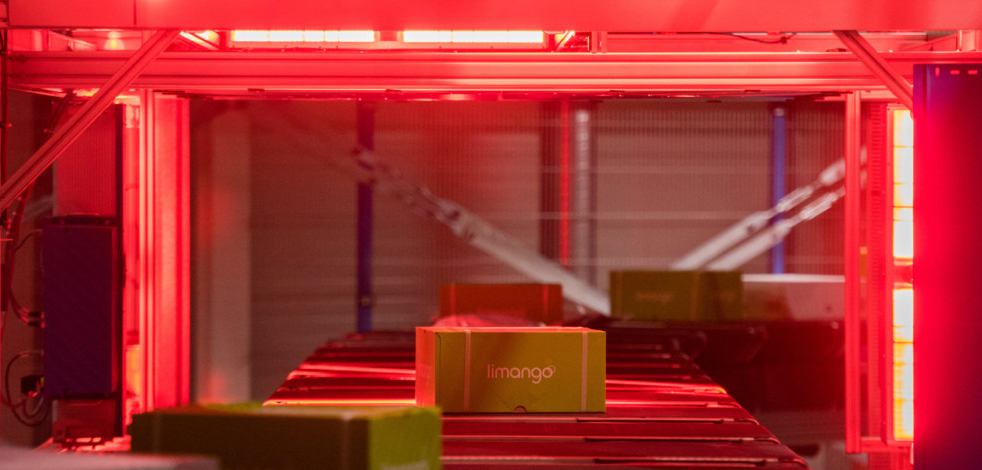Things are getting crowded for logistics providers in the last mile. As the volume of transported goods continues to rise, so too does delivery traffic. Yet, increasingly, customers expect their parcels as quickly and sustainably as possible. Hoping to overcome these challenges are a variety of innovative technological solutions. But which of these are imminent and which remain a distant dream? Find out more in our look ahead to five main technology trends for 2020.
Chatbots for instant customer service; electric drones for greener, faster delivery; artificial intelligence for improved operational efficiency – the list of exciting new technology in logistics is a long one. While some are already making their mark, others remain a long way off. We examine what 2020 will bring for five major logistics trends.
Reduced emissions
A major goal for all logistics operators is increased sustainability. Vehicles are crucial to this and Hermes has already integrated electric vans into its fleet. Hermes UK also recently expanded its portfolio of compressed natural gas vehicles.
Cargo bikes were at the center of the 2018 KoMoDo pilot project in Berlin, Germany, and can be used in combination with city center micro-depots, which incorporate various delivery methods. “If the transition from loading zone to transporter is fast, then a bike can be more efficient across the last mile than any van,” says Kai-Oliver Schocke, professor for logistics and production management at the Frankfurt University of Applied Sciences (UAS).
Alternative transportation methods can also help reduce emissions: Hermes has been investigating using trams in Frankfurt, for example, and an appropriate parcel container is currently under development. “The main idea is to take traffic off the streets,” says Schocke. This principle can be expanded – to vehicles that are already on the move. “Drivers for bakeries or cleaning companies, for example, could carry parcels with them,” Schocke says. A further solution is to change delivery times to coincide with less busy periods. “In Cologne, tests have been carried out in the evenings,” says Schocke. “This can make journeys more efficient and can considerably reduce emissions.”
Drone deliveries
Is the sky the limit? For several years, drones have been touted as the future of transportation, relieving congestion on the ground. There have been several isolated examples of drone delivery testing, but they are yet to truly take off as a widespread solution. The main hurdles are less technological and more regulatory, but expect some progress in 2020 as development continues around the world. Google spin-off Wing recently won aviation authority approval for commercial deliveries in the USA and Australia, while Amazon’s Prime Air will begin deliveries “within months”, it says.
In 2020, these will remain limited to trials in restricted areas, mostly away from built-up urban centers, as aspects like safety, noise and privacy are investigated more closely. Rather than individual deliveries to private customers, a more realistic near-term use for drone deliveries is across private company facilities: industrial multinational Thyssenkrupp, for example, transports lab samples by drone across its vast site in Duisburg, Germany.
Underground transportation
The sky isn’t the only alternative to the street; soon, goods may be transported under the earth. In Hamburg, Germany, Smart City Loop wants to move palettes through a 5km tunnel from a distribution center on the edge of the city to the center, eliminating thousands of journeys above ground. In Switzerland, meanwhile, Cargo Sous Terrain (CST) hopes to eventually establish an entire network of transportation tunnels. Both projects are medium- rather than short-term, however. Smart City Loop aims to publish a feasibility study by the end of 2019; CST has already completed one and wants to start a 70km test track in 2025.
Individualised customer service
As technology evolves, so too do customer expectations. They now want to know precisely where their parcels are at all times, as well as having the freedom to decide delivery locations, even at short notice. Several startups are tackling these challenges and 2020 will likely see these and other services continue to expand: Dubai-based Fetchr uses GPS to deliver packages to smartphone-equipped consumers wherever they happen to be; and London company what3words has divided the world into 3m squares, each with a three-word label, enabling customers to specify any delivery location via its app.
Increasingly intelligent algorithms are also enabling customers to pose more – and more complicated – questions about deliveries to chatbots, or digital assistants, which can provide instant help. Introduced by Hermes in the UK in 2019, Holly has already helped thousands of customers, even receiving thank-you notes.
Blockchain
Blockchain first grabbed headlines thanks to its association with cryptocurrencies. “But the technology is also very well suited to any type of supply chain,” says Michael Henke from the Fraunhofer Institute for Material Flow and Logistics (IML). That’s because blockchains generate precise, secure and transparent protocols, ideal for parcel delivery. Who took delivery of which parcel and when? Who has which authorization? Increasingly, blockchain is being used for parcel-tracking systems.
“The largest potential lies in combining blockchain and the Internet of Things, which connects the payment and delivery processes” says Michael Henke. Take XRide from Deutsche Telekom. The pilot project uses blockchain technology to create an open urban mobility ecosystem that decentralizes payment and identity credentials to make scooter sharing simpler and safer from hacking. When applied to logistics that means: when someone orders a product, blockchain establishes in real time whether all necessary criteria are fulfilled, from proof of age to financial solvency; simultaneously, the supply chain begins, before ending when the customer receives their order. Invoices, delivery approvals and receipt confirmations are all rendered unnecessary and every single step is securely documented. “The technology itself has been available for some time,” says Henke. “What we need is greater cooperation between industry and politics to create the necessary IT infrastructure.”
This article was first published by Hermes here.


